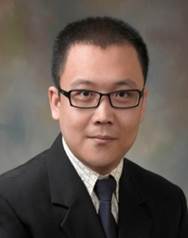学术报告:Functional Nanoparticles-Enabled Biodetection and Controlled Delivery of Biologics
报告题目:Functional Nanoparticles-Enabled Biodetection and Controlled Delivery of Biologics
报告时间:2024年1月29日(星期一)13:30-14:30
报告地点:食品科学与资源挖掘全国重点实验室502
报告人:Hongwei Duan
报告人简介:Hongwei Duan is a professor in the School of Chemistry, Chemical Engineering and Biotechnology at Nanyang Technological University (NTU). He received his B.S. in applied chemistry and M.S. in polymer chemistry & physics at Fudan University. After completing his Ph.D. at the Max Planck Institute of Colloids and Interfaces, he had his postdoctoral training in the joint Department of Biomedical Engineering at Emory University and Georgia Institute of Technology. He joined NTU as a Nanyang Assistant Professor in 2009. His current research focuses on understanding surface/interface properties of micro- and nano-structures to achieve tailored optical, electronic, magnetic, and structural properties, for their biomedical applications.
摘要:Nanostructures with size and shape dependent plasmonic, magnetic and enzymatic properties are of tremendous potential across many disciplines spanning chemistry, materials science, photonics, and medicine. The development of plasmonic nanostructures with precisely controlled spectroscopic properties and/or multifunctional characteristics is key to their use in diverse applications. In particular, tailored LSPR of plasmonic nanostructures allows for spatially confining photons at sub-wavelength scales and controlling light-molecule interactions at specific wavelengths.Excited LSPR dissipates energy of incident light by the combination of Mie scattering and absorption-mediated thermal conversion, making plasmonic nanostructures compelling photoabsorbers and imaging agents.On the other hand, magnetic nanostructures offer flexible manipulation by tailored magnetic fields for directional and rotational motions which are of great potential for bioseparation, liquid mixing, and disease targeting. This talk summarizes our recent work in developing tailored plasmonic and magnetic nanostructures that were not easily accessible by traditional colloidal chemistry. We have shown that our strategies based on the use of reactive polymers and supramolecular chemistry offers new opportunities in addressing some fundamental challenges in surface enhanced spectroscopy, diagnostic microfluidic biochips, and targeted therapy.

欢迎各位老师和同学参加!



